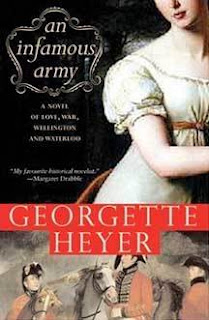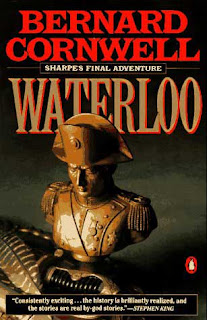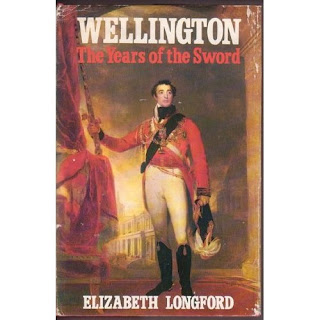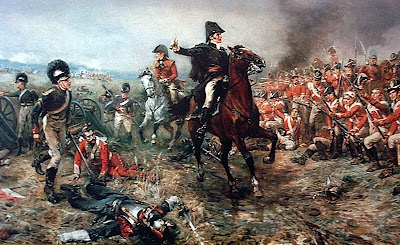Category: Battle of Waterloo
Exploring the Battlefields at Waterloo
After he reached Paris, Napoleon’s plan was to march north from the French border to Brussels, defeating the Allied troops stationed around Brussels led by Wellington and the Prussian troops who were moving west from Germany toward a rendezvous with Wellington. Napoleon planned to prevent that meeting by keeping the two Allied armies apart. The plan of Wellington and Blücher was to meet up and defeat the French forces. At right, Prussian Field Marshall Gebhard Leberecht von Blücher.
The first battle was Quatre Bras (pronounced something like Ka-tra-BRA, meaning Four Arms), a strategic crossroads village. The road from the French border north to Brussels here crosses the east-west road from Germany to the coastal ports. At left, Quatre Bras today.
The English arrived here on the morning of June 16 and met French forces sent by Napoleon and led by Marshal Ney. As more and more Allied troops arrived, Wellington was able to hold off the French.
 Above, the monument at Fleurus honors three French victories. The 1815 victory at the nearby village of Ligny over the Prussians was the final victory of Napoleon’s career on June 16, 1815. Two days later, so to speak, he met his Waterloo!
Above, the monument at Fleurus honors three French victories. The 1815 victory at the nearby village of Ligny over the Prussians was the final victory of Napoleon’s career on June 16, 1815. Two days later, so to speak, he met his Waterloo!to fight the French with their combined forces.
about Wellington’s victory over Napoleon. Must have been translated from the French!
 Here are a couple of suggestions for further reading on the Battle of Waterloo. If you are a fiction fan, the account in Georgette Heyer’s novel An Infamous Army was once used as a text at the British military college Sandhurst.
Here are a couple of suggestions for further reading on the Battle of Waterloo. If you are a fiction fan, the account in Georgette Heyer’s novel An Infamous Army was once used as a text at the British military college Sandhurst. The final Sharpe adventure is excellent, and the account of the battle is reasonably accurate if you remove Sharpe from the action, in a sense.
The final Sharpe adventure is excellent, and the account of the battle is reasonably accurate if you remove Sharpe from the action, in a sense. The late Elizabeth Longford wrote a two-volume biography of the Duke of Wellington. In the first of these, The Years of the Sword, there is an excellent account of the battle.
The late Elizabeth Longford wrote a two-volume biography of the Duke of Wellington. In the first of these, The Years of the Sword, there is an excellent account of the battle. Of course there are hundreds of books about the Battle of Waterloo, the Peninsular Wars, the Napoleonic Wars, the Congress of Vienna, etc. etc. as well as websites, blogs and films. I haven’t fnished it yet, but I also recommend the book by the expert who accompanied our Waterloo visit, Jeremy Black of the Univerity of Exeter, UK.
Of course there are hundreds of books about the Battle of Waterloo, the Peninsular Wars, the Napoleonic Wars, the Congress of Vienna, etc. etc. as well as websites, blogs and films. I haven’t fnished it yet, but I also recommend the book by the expert who accompanied our Waterloo visit, Jeremy Black of the Univerity of Exeter, UK.Back in the U.S. of A
Kristine here, back in the land of television shows in English and computer keyboards with all the keys where they should be. I did try to post while in France, but honestly, it was too frustrating. As Vicky has posted, once she is also back in the States we’ll be posting blogs and pics of our trip, but for now I’ll give you the highlights of the Wellington tour once Vicky and I parted ways. Vicky and Ed left us on Sunday morning, Battle of Waterloo day, in order to make their cruise connection. Brooke and I went on with the tour to the re-enactment site.
When we’d visited the day before to see the military camps, La Belle Alliance and Hougemount, someone had asked me if I were going to walk to the top of the Lion’s Mound, the great man-made hill erected to commemorate the Battle and I responded, emphatically, no. It’s an almost verticle hill with many, many steps to the top. Well, dear reader, never say never. It turns out that there were so many visitors to the battle that if you’d stayed on the ground, you’d never see a thing, being five or six deep in a crowd of spectators. It was absolutely freezing on the day, and had rained the day before so Brooke and I bought commemorative Waterloo blankets (not kidding) and began the long climb up the mound. We got about half way there and found ourselves spots from which to view the action. Once you left the stairs, you had to crouch down in order to walk to your place, the slope is so steep. Also, it’s covered in slippery grass, with no footholds to speak of. Talk about harrowing. Brooke later told me that she’d never before actually seen terror in anyone’s eyes as she had when she was helping me to our place. The fact that people above us kept losing their personal items – cameras, umbrellas and such – and that these kept rolling down the hill past us did not offer us much comfort. At last we found purchase, digging our heels and butts into the hillside in order to gain a bit of purchase, and settled in for the show. . .
And what a show it was. It was absolutely thrilling to be in the thick of the Battle, so to speak. The formations, the cannons going off, the rifles being fired, the smoke enveloping the field as mounted calvary cantered across the field, all of it was fabulous. And to add to the authenticity of the thing, it began to bucket down rain. So now I’m precariously perched on the side of the Mound, watching the battle, holding an umbrella over us and trying to film the Battle. It was at this point that Brooke told me she wasn’t into Wellington as much as I was and this was all more of a sacrifice than she was prepared to make and that she was going down the pub to wait for me in the dry, with a drink. Thank God one of fellow tour members, an exceedingly nice man who was a retired police detective from Surrey, was with us and able to help me back down the Mound at the end or I’d still be sitting at the Battlefield.
Vicky and I took masses of photos all along the way and we promise to post them soon – shots of the military camps, the battle sites and lots of re-enactors in various uniforms. I also took much video – including footage of “Wellington” on horseback, galloping between regiments – and if I can figure out how to edit these, I’ll be posting them in the near future. It’s grand to be back and we look forward to sharing our trip via our posts here soon.
Save Hougoumont!
The following email was passed on from the Historical Novel Society and we in turn are now passing it on to you, as we feel it may be of interest. During the Battle of Waterloo, Chateau Hougoumont was the scene of almost constant fighting, hour upon hour of artillery, fires, attacks from waves of soldiers. Hundreds of men died inside and out. It is certainly worth commemorating.
PROJECT HOUGOUMONT
Dear All,
I am sending this e mail to a number of friends who I think might be interested in history, or may know someone who has such an interest. I am on the committee of Project Hougoumont, the official organization that plans to restore the Farm at Hougoumont, on the battlefield of Waterloo. In cooperation with the local and federal authorities in Belgium, we are hoping to raise approximately 40% of the cost of the renovation of this historic centre of the battle that changed the course of history on June 18th, 1815.
Project Hougoumont also has the agreement of the Belgian Authorities to commission a monument that will be placed inside the gates at Hougoumont in memory of the British Army that fought at Waterloo. You may be surprised to learn that whilst there are monuments to the French, Belgian, Hanoverian, Nassau and Prussian forces that fought in the great battle, there has never been a monument to the British officers and men who formed the greater part of Wellington’s army.
To accomplish the above, we wish to set up a network of interested people who may wish to take part in this historic event. You may wish to help sponsor this project or at least be kept informed of its progress. The project has developed a very novel idea for fund raising that will name sponsors on a Roll of Honour that will be kept at Waterloo for all time. Future generations will be able to see the Roll of Honour on a computer and in a series of volumns located in the farmhouse at Hougoumont.
Project Hougoumont would like to e-mail you on a regular basis to up date you on progress with the restoration of the farm and the commissioning of the monument. We have set up a secure network that ensures that your e-mail address is not circulated to anyone without your permission, and we will require your agreement to put your name on our networking list. All of us at Project Hougoumont welcome your interest in this exciting project. Read more on our website.
Best wishes, Steve Stanton
The London and Waterloo Tour – Our Itinerary
It occurred to me that before Victoria and I begin posting about the things we plan to see and do on our tour, you should know just what it is we plan to see and do. To that end, here’s our itinerary:
Thursday, June 10th – Victoria arrives in London
Saturday, June 12th – Kristine and Brooke arrive in London, and within hours we head out to the Queen’s Gallery at Buckingham Palace to see the Victoria and Albert: Art and Love exhibition. Then it’s over to Apsley House (Yes!) and a walk round the St. James’s area, taking in the Square, the side streets, the shops and Piccadilly. No doubt we’ll be dropping in to the Red Lion Pub, a few doors up from the Almack’s Building, for a pint. Or two. That night, we’ll be dining at the Grenadier Pub in Wilton Row, once the local pub for the men in the Duke of Wellington’s Regiment and filled with military and Wellington memorabilia.
Sunday, June 13th – This one is subject to change. It’s either off to a Sunday roast at Gordon Ramsay’s Chelsea restaurant, Foxtrot Oscar’s, and then on to the National Army Museum and perhaps to Liberty’s before they close at 6 p.m. Or, Victoria will be doing research while Brooke and I head out to Hampstead, the Heath and Kenwood House.
Monday, June 14th – To Kensington Palace, with tea in the Orangery, and then we’re off to Cecil Court and Charing Cross Road for book browsing, to Grosvenor Prints in Seven Dials for print browsing, followed by drinks at the Landsdowne Club and perhaps a dinner of Peking duck in Leicester Square.
Tuesday, June 15th – We’re off to Windsor to spend the day with author Hester Davenport. A tour of the Castle, old Windsor and a meal are all on the agenda. No plans for this evening, as no doubt we’ll be knackered.
Wednesday, June 16th – Victoria’s husband, Ed, arrives and she’s off to spend the day with him. If they haven’t yet made it to Hampstead, Brooke and Kristine will do that. If they have, then instead they plan to visit lots of pubs, browse at Top Shop and Sephora and God only knows what else.
Thursday, June 17th – We all head out to Dover, cross the English Channel and end up in Waterloo – Woooo Hooooo!
Friday, June 18th – Tour of the Waterloo sights and battle camps, with fireworks in the evening. Wooo Hooo again!
Saturday, June 19th – Visit the battle locations in and around Waterloo, with evening tour in Brussels titled “Walking in Wellington’s Footsteps.” Double Woooo Hoooo!
Sunday, June 20th – The re-enactment of the Battle of Waterloo – Huzzah! After which, Brooke and I again follow in Wellington’s footsteps and head off to Paris for a few days, while Victoria and Ed embark on a Rhine river cruise.
So there you have it. As I’ve indicated before, Victoria and I will be doing in-depth blogs on the various places we plan to visit and . . . . we’ll be bringing along a video camera, which neither of us really knows how to use beyond the old “point and shoot” method. If you can put up with the shaking, weird camera angles, any light problems and the like, we’ll be posting the videos on this blog for all to see. . . . as they say in England – oy vey.









